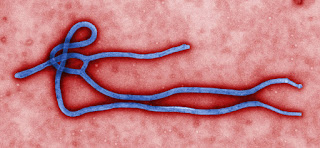There’s a reason why the government and private companies mandate regular fire drills. This is because knowing how to safely and effectively evacuate buildings is necessary for saving lives. According to Martin Sanders, Ph.D., CSP, fire marshals estimate that hundreds of people could die during an emergency if people take too long when evacuating a building.
Regardless if you’re an employee that spent years working in a building or a guest, it’s important to know where the fire exits are located. Buildings often have multiple fire exits so be sure to take note of each. During an emergency like an earthquake, some exits could be blocked by debris.
If you are always wearing specific footwear at work that makes it difficult to move swiftly like platform shoes or heels, always have a pair of comfortable footwear with you so you can switch when an emergency takes place. And if you have a lot of belongings with you that could slow you or others down, leave them at a safe location like an office drawer.
In the event of an emergency and everyone is requested to evacuate, do not panic. Find the exit nearest you and make your way down in a brisk manner. Do not push or shove people along the way to get ahead.
Once you reach the outside of the building, get some distance between you and the building. Capt. Martin Sanders states that you need to give room for others exiting the building and should always treat the whole of the building as a non-safe zone.
Captain Martin Sanders, Ph.D., CSP, had been deeply involved in biosafety and biosecurity issues both domestic and international. In addition, he has been a member of many research teams and has contributed to several published studies on epidemiology. Visit this page for similar reads.
Disclaimer: This site was prepared by Martin Sanders in his spersonal capacity. The opinions expressed are the author's own and do not reflect the views of the USPHS, the Department of Health and Human Services, or the United States government.
 |
Image source:
cfs-solutions.net
|
 |
Image source:
escapeconsult.com
|
If you are always wearing specific footwear at work that makes it difficult to move swiftly like platform shoes or heels, always have a pair of comfortable footwear with you so you can switch when an emergency takes place. And if you have a lot of belongings with you that could slow you or others down, leave them at a safe location like an office drawer.
In the event of an emergency and everyone is requested to evacuate, do not panic. Find the exit nearest you and make your way down in a brisk manner. Do not push or shove people along the way to get ahead.
Once you reach the outside of the building, get some distance between you and the building. Capt. Martin Sanders states that you need to give room for others exiting the building and should always treat the whole of the building as a non-safe zone.
Captain Martin Sanders, Ph.D., CSP, had been deeply involved in biosafety and biosecurity issues both domestic and international. In addition, he has been a member of many research teams and has contributed to several published studies on epidemiology. Visit this page for similar reads.
Disclaimer: This site was prepared by Martin Sanders in his spersonal capacity. The opinions expressed are the author's own and do not reflect the views of the USPHS, the Department of Health and Human Services, or the United States government.

